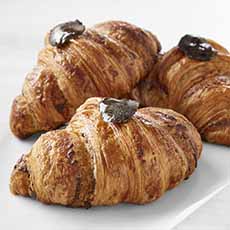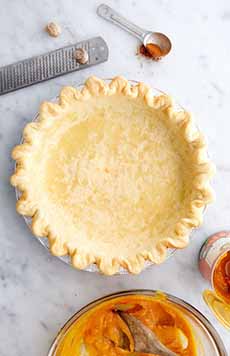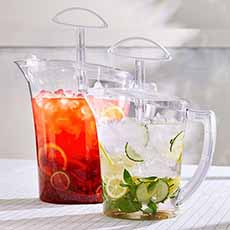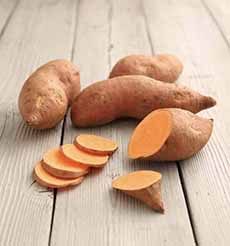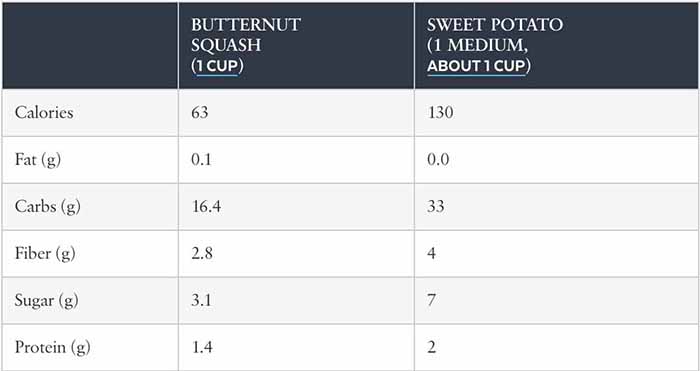|
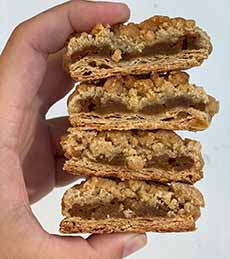
[1] Apple Pie cookies: crust on the bottom, streusel on the top. There are also Chocolate, Pecan and Triple Berry flavors (all photos © Janie’s Life-Changing Baked Goods).

[2] There are also traditional favorites, like Chocolate Chip…

[3] …and Chewy Triple Ginger.

[4] The gift box we want—anytime!
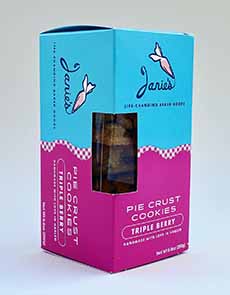
[5] Triple Berry Pie Crust Cookies.
|
The formal name of this business is Janie’s Life-Changing Baked Goods.
When Janie was down and out, without direction, she baked the Pie Crust Cookies that changed her life.
What is a pie crust cookie? Janie explains:
Her quest began with trying to make perfectly proportioned bites of pie.
In the process, she invented a cookie where every bite achieves that perfect balance: a flaky crust on the bottom, delectable filling, and buttery, caramelized streusel on top.
The Pie Crust Cookie has won Janie numerous awards, made her a Food Network “Chopped Sweets” Champion, and has guided her mission in life.
JANIE’S CURRENT COOKIE MENU
In addition to pie crust cookies, Janie bakes excellent traditional cookies. Both are superb and must-try!
There are standard as well as seasonal flavors. The options currently include:
Pie Crust Cookies
Pie Crust Bites in Apple (photo #1), Chocolate, Pecan and Triple Berry
Pumpkin Pie Crust Bites
Mini Chocolate Espresso Pecan Pies
You’ve got to experience them!
Traditional Cookies
Chewy Triple Ginger Cookies (photo #3)
Coffee Toffee Butter-Crunch Cookies
Half Baked Chocolate Chip Cookies (photo #2)
And drat: We missed out on the Limited Edition Nutella Stuffed Chocolate Chip Cookies and Caramel Brownies, which quickly sold out.
That’s the reason to sign up for Janie’s email list!
MORE BAKED TREATS
If you live in New York City, there’s an irresistible selection of pies and tarts for delivery.
The current lineup includes Apple Cranberry Ginger Pie, Chocolate-Caramel Tart and Chocolate Espresso Pecan Pie.
JANIE’S COOKIES FOR YOURSELF & FOR GIFTS
There are deluxe gift boxes and single-flavor boxes that make great stocking stuffers.
And you can treat yourself to any and all!
You can’t buy too many of Janie’s cookies. They freeze well.
“But for a truly life-changing experience,” says Janie, “pop them in a 350° oven for 3-5 minutes. Trust us, you’ll thank us.”
Resistance is futile.
Head to JanieBakes.com.
JANIE GIVES BACK
As a recipient of grants and scholarships that helped her up the ladder to achieving her goals, Janie wants to help bring others up that ladder.
She provides second chance employment, teaches baking classes to underprivileged youths in East Harlem, and donates time and cookies to local community centers and homeless shelters.
You can read her inspiring story on the website.
We’ll always be fans!
> THE HISTORY OF COOKIES
> THE DIFFERENT TYPES OF COOKIES
|





